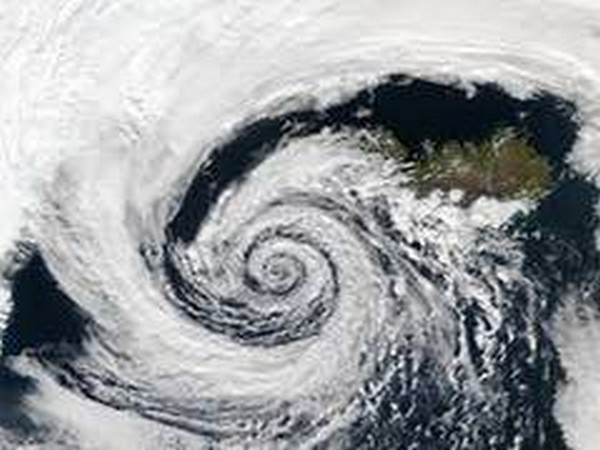Hurricane Fiona slams Dominican Republic, Puerto Rico; three dead
One man was killed in a treefall in the coastal town of Matancitas north of capital Santo Domingo, emergency operations official Juan Manuel Mendez told reporters. The Category 2 hurricane, packing maximum wind speeds of 110 mph (177 kph), was about 80 miles (129 km) southeast of Grand Turk Island, the Miami-based National Hurricane Center (NHC) said, and is expected to strengthen to Category 3 as it heads across warm Caribbean waters to the Turks and Caicos.

Hurricane Fiona was churning north on Monday night after bringing torrential rain and powerful winds to the Dominican Republic and a total power outage in neighboring Puerto Rico, killing at least three. The first hurricane to score a direct hit on the Dominican Republic since Jeanne left severe damage in September 2004, Fiona caused severe floods, cutting off villages, forcing about 12,500 from their homes, and leaving 709,000 without power.
"The damage is considerable," said President Luis Abinader, who plans to declare a state of disaster in the provinces of La Altagracia, home to the famed resort of Punta Cana, El Seibo,and Hato Mayor. One man was killed in a treefall in the coastal town of Matancitas north of capital Santo Domingo, emergency operations official Juan Manuel Mendez told reporters.
The Category 2 hurricane, packing maximum wind speeds of 110 mph (177 kph), was about 80 miles (129 km) southeast of Grand Turk Island, the Miami-based National Hurricane Center (NHC) said, and is expected to strengthen to Category 3 as it heads across warm Caribbean waters to the Turks and Caicos. On Tuesday, the center of Fiona is expected to pass near the archipelago, where a hurricane warning has been declared, the NHC said, with tropical storm conditions also expected in the Bahamas.
After strafing Puerto Rico, Fiona made landfall in the Dominican Republic near Boca Yuma early on Monday, with its center reaching the northern coast of Hispaniola before noon. In La Altagracia, in the extreme east, the overflow of the Yuma River damaged farms and left several towns isolated.
Electric and water utilities are working to restore services in affected areas. Puerto Rico, a territory of the United States, is still being lashed by strong winds, frequent lightning, and heavy rain after Fiona made landfall there on Sunday afternoon, dumping up to 30 inches (76.2 cm) of rain in some areas.
The storm comes five years after Puerto Rico was ravaged by Hurricane Maria, which triggered the worst power blackout in U.S. history. U.S. President Joe Biden spoke with Puerto Rico Governor Pedro Pierluisi on Monday, promising to add more support personnel sent to the island over the next few days.
"The president said that he will ensure the federal team remains on the job to get it done," the White House said in a statement. Federal Emergency Management Agency (FEMA) Administrator Deanne Criswell will travel there on Tuesday.
Jeannette Rivera, 54, a public relations worker in Orlando, Florida, said she had not spoken with her family since a spotty phone call early Sunday. She fears for her parents' safety and the health of her 84-year-old father, who had just contracted COVID-19 and was running a fever.
"My worry is that if they need help, there's no way to communicate," Rivera said. WITHOUT POWER
Nearly 90% of Puerto Rico remained without power on Monday, according to Poweroutage.us. Officials said it would take days to restore power to all the island's 3.3 million people. Downed trees and mudslides blocked many roads. Social media images showed submerged cars, people wading in waist-deep water, and rescue boats floating down swamped streets. Just 30% of drinking water customers have service.
Crews rescued about 400 people from flooding in the southern town of Salinas, where rain slowed to a drizzle. The south and southeast regions were the hardest hit. Puerto Rico's power grid remains fragile despite emergency repairs after Maria, says the Center for a New Economy, a Puerto Rican think tank.
Thousands of Puerto Ricans still live under makeshift tarpaulin roofs in the wake of Maria, a category 5 storm in 2017 that killed more than 3,000 people, left 1.5 million customers without electricity, and knocked out 80% of power lines. A 70-year-old man in the northern town of Arecibo was Puerto Rico's first-known casualty, killed instantly by the explosion of his electric generator as he tried to start it, police said.
A second man drowned, while police said an 88-year-old woman died of a heart attack. Hundreds of responders joined recovery efforts after Biden declared an emergency, allowing FEMA to coordinate disaster relief for the island.
For most of the five years since Maria, the debt-laden government and power utility were mired in bankruptcy, with Puerto Rico's finances managed by a federally appointed oversight board.
(This story has not been edited by Devdiscourse staff and is auto-generated from a syndicated feed.)










